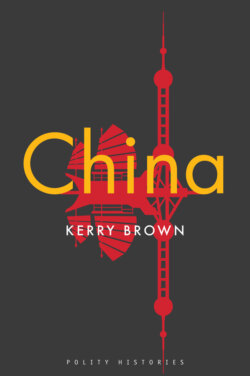Читать книгу China - Kerry Brown - Страница 20
Land Reform: China’s Earliest Harvest of Sorrows
ОглавлениеOne of the paradoxes of Maoist politics was that despite its opposition to urban-based capitalism, and its core support coming from rural China (the urban population being then so small), the countryside was to suffer the greatest calamities. The famines in the 1960s are the most extreme example of this, with rural areas largely starved in order to feed cities. Land Reform was one of the most important political movements sponsored by the Mao government from 1949 onwards and it directly impacted on the countryside. Mao had earlier observed abuse against exploitative landlords in his native Hunan in the 1920s, writing a famous report on this.14 This was to frame his world-view in subsequent decades. China’s countryside was the home to most people, but it was a place of pre-modernity, the epitome of the old society and the exploitation it involved.
Since ancient times, land had been a source of power and wealth. Those with land at least had security. But some had accrued large amounts, and others ended up with nothing, being no better than indentured slaves. If China was to reform, then the countryside needed to undergo revolution – and that meant addressing the inequalities of land ownership. State control needed to be introduced. As the 1950 Agrarian Reform Law stated in its preamble, the current arrangement was one of feudal exploitation by the landlord class ‘and should be abolished and the system of peasant land ownership shall be introduced in order to set free the rural productive forces, develop agricultural production, and thus pave the way for China’s new industrialization’.15
Of all the components of the Land Reform movement, before and after it was rolled out nationally, ‘struggle sessions’ were the most infamous. Mao had witnessed these in Hunan in 1926, theatrical events in which those under investigation were marched around the streets humiliatingly wearing tall dunce’s hats emblazoned with their name. Eye-witness American farmer William Hinton observed the ethos of struggle sessions enacted against Party members through the eyes of a cadre called Hou:
In work review meetings during the past week Comrade Hou had stressed the need to keep the movement from developing into a ‘struggle’ against the Party and cadres as individuals. The work time must keep in mind the real virtue of those whose records were under review. It must sustain their morale, preserve their sanity and keep alive in them that spark of courage, energy and ability which had made them leaders in the past.16
A similar need for judiciousness was necessary when landowners were exposed and had to submit to discipline and public correction. Hinton does refer obliquely to violence in his account. But other testimony shows that violence was not an unfortunate, occasional outcome of this movement, but a core part of it. Mao had been the proponent of revolution being a necessarily violent event. It was not, as he famously declared, a dinner party. Violence was inevitable and ubiquitous. The Land Reform movement was to see as many as 2 million perish, with countless other acts of physical violence against those targeted. ‘Under the new guidelines of “not correcting excesses prematurely” the aroused masses frequently engaged in unchecked outbreaks of violence and brutality.’17 It was the first widescale campaign which created a new class in the PRC – disgruntled victims – and a new elite – the middle peasants who had benefited from the redistribution. China’s renewal and regeneration, as shown by this example from the very dawn of the PRC, was to be a process in which there were always clear winners and losers, and in which compromise and consensus were never easy, nor, perhaps, even the objective.
